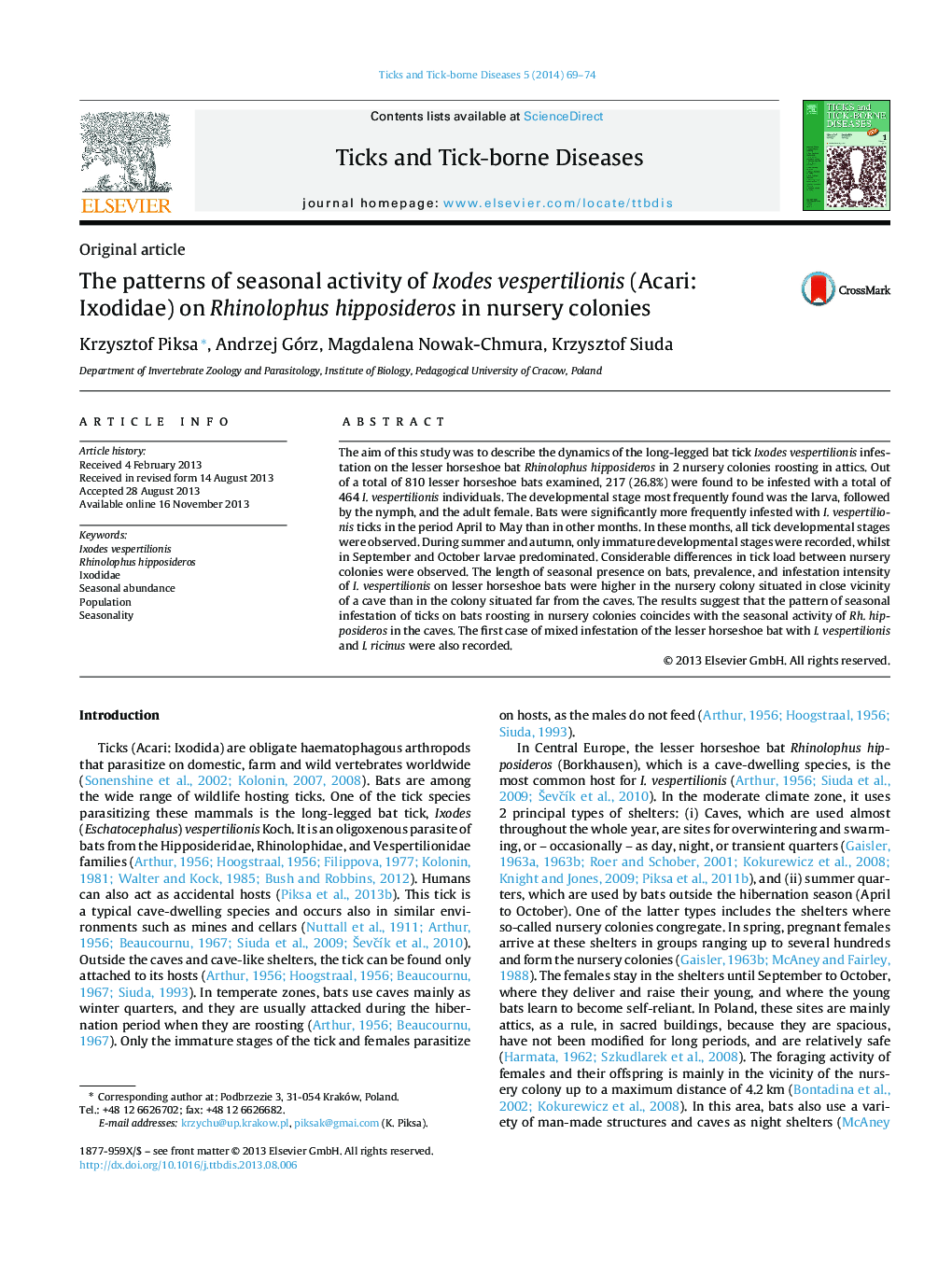| Article ID | Journal | Published Year | Pages | File Type |
|---|---|---|---|---|
| 2474125 | Ticks and Tick-borne Diseases | 2014 | 6 Pages |
The aim of this study was to describe the dynamics of the long-legged bat tick Ixodes vespertilionis infestation on the lesser horseshoe bat Rhinolophus hipposideros in 2 nursery colonies roosting in attics. Out of a total of 810 lesser horseshoe bats examined, 217 (26.8%) were found to be infested with a total of 464 I. vespertilionis individuals. The developmental stage most frequently found was the larva, followed by the nymph, and the adult female. Bats were significantly more frequently infested with I. vespertilionis ticks in the period April to May than in other months. In these months, all tick developmental stages were observed. During summer and autumn, only immature developmental stages were recorded, whilst in September and October larvae predominated. Considerable differences in tick load between nursery colonies were observed. The length of seasonal presence on bats, prevalence, and infestation intensity of I. vespertilionis on lesser horseshoe bats were higher in the nursery colony situated in close vicinity of a cave than in the colony situated far from the caves. The results suggest that the pattern of seasonal infestation of ticks on bats roosting in nursery colonies coincides with the seasonal activity of Rh. hipposideros in the caves. The first case of mixed infestation of the lesser horseshoe bat with I. vespertilionis and I. ricinus were also recorded.
